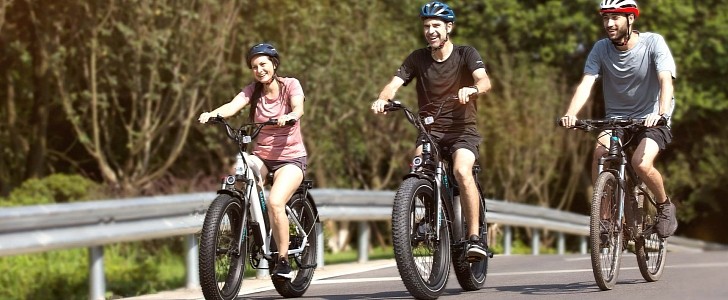What most people know about the Dutch is that many of them go about their everyday lives on bicycles. Before you write stereotype in full caps in the comments section, statistics have shown that The Netherlands has some of the highest rates of cycling in the world. According to a new study, annual global carbon emissions would drop by 686 million tons if everyone in the world did the same.
Now, it is a bit utopian to expect everyone to stop using their cars for everyday trips and immediately switch to a bicycle instead. If that were to happen in a magical fashion, overnight or so, the estimated drop in carbon emissions would be so great that it would exceed the entire carbon footprint of countries like Australia, Canada, Saudi Arabia, or the United Kingdom.
The study was made by the University of Southern Denmark, which had a team of scientists who analyzed the global production, ownership, and usage of bicycles across the world, by country, from 1962 to 2015.
The study was published in the Communications Earth and Environment Journal, and it showed that every person in the world would have to cycle 2.6 kilometers (ca. 1.61 miles) per day, similar to cycling patterns in The Netherlands, to enable the world to have a reduction of 686 million tons of carbon per year.
In Denmark, for example, people cycle an average of 1.6 kilometers (ca. 1 mile) a day, which would mean a reduction of 414 million tons of carbon emissions if everyone in the world did the same. The amount is equivalent to the United Kingdom's total carbon emissions in 2015.
Obviously, not everyone knows how to ride a bicycle, and not everyone has the health condition to enable that to happen. While the former and the latter would probably love to be able to cycle, the world does not work entirely on what people wish they could be able to do but on what they can do and what they actually do.
On a global scale, the transport sector accounts for a quarter of global fuel-related greenhouse gas emissions, and half of those come from private vehicles – including passenger cars and trucks.
This should not be news to anyone, but it goes to show that motorists are not the only people responsible for pollution. Every little bit helps, though, so maybe we should stop ghost flying, as well as taking private jets on ultra-short routes.
Governments interested in promoting cycling are advised to develop infrastructure accordingly, offer pro-bicycle education in schools, as well as plan, and build bicycle lanes. Without the careful construction of bicycle culture in a country, it is difficult to tap the climate benefits of its use on a large scale.
The study was made by the University of Southern Denmark, which had a team of scientists who analyzed the global production, ownership, and usage of bicycles across the world, by country, from 1962 to 2015.
The study was published in the Communications Earth and Environment Journal, and it showed that every person in the world would have to cycle 2.6 kilometers (ca. 1.61 miles) per day, similar to cycling patterns in The Netherlands, to enable the world to have a reduction of 686 million tons of carbon per year.
In Denmark, for example, people cycle an average of 1.6 kilometers (ca. 1 mile) a day, which would mean a reduction of 414 million tons of carbon emissions if everyone in the world did the same. The amount is equivalent to the United Kingdom's total carbon emissions in 2015.
Obviously, not everyone knows how to ride a bicycle, and not everyone has the health condition to enable that to happen. While the former and the latter would probably love to be able to cycle, the world does not work entirely on what people wish they could be able to do but on what they can do and what they actually do.
On a global scale, the transport sector accounts for a quarter of global fuel-related greenhouse gas emissions, and half of those come from private vehicles – including passenger cars and trucks.
This should not be news to anyone, but it goes to show that motorists are not the only people responsible for pollution. Every little bit helps, though, so maybe we should stop ghost flying, as well as taking private jets on ultra-short routes.
Governments interested in promoting cycling are advised to develop infrastructure accordingly, offer pro-bicycle education in schools, as well as plan, and build bicycle lanes. Without the careful construction of bicycle culture in a country, it is difficult to tap the climate benefits of its use on a large scale.











